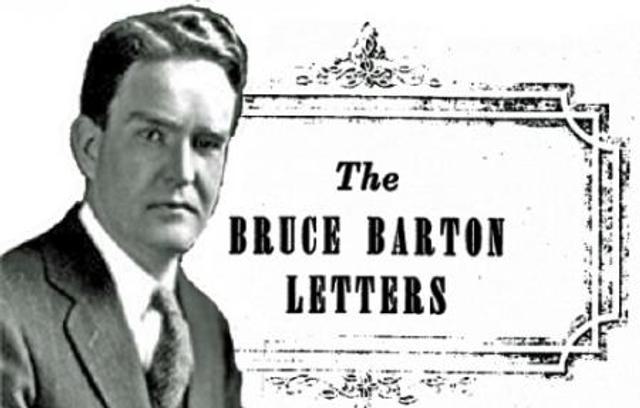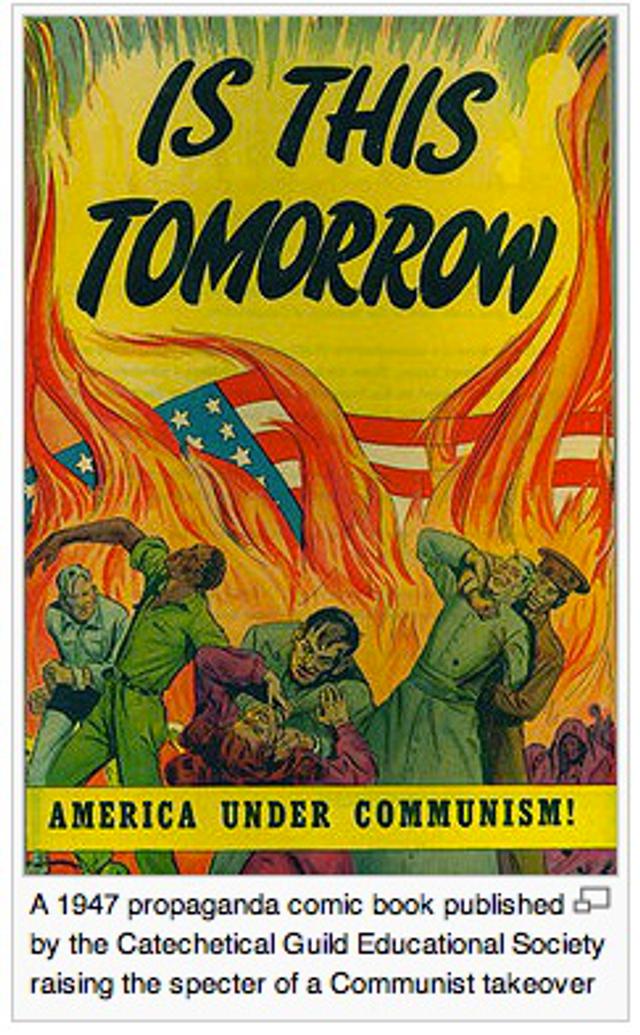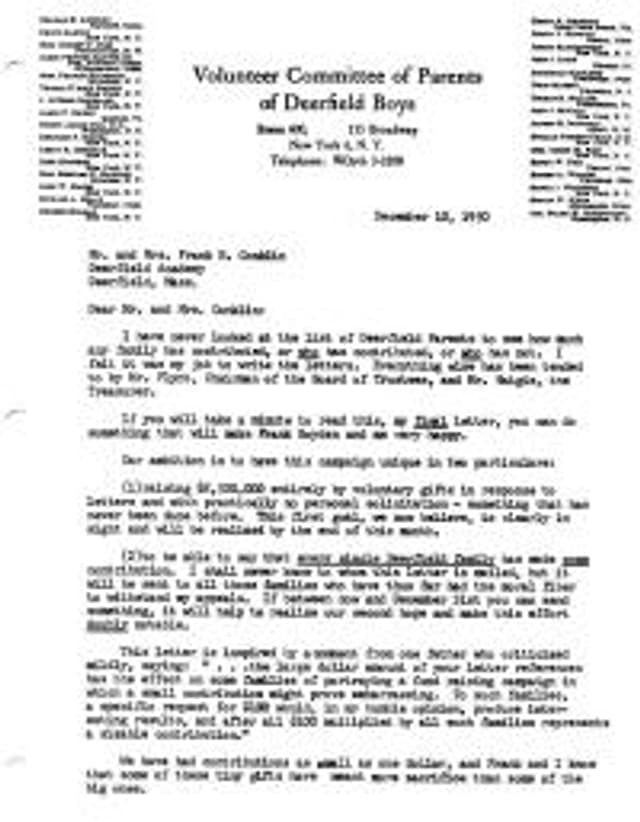Deerfield Academy: Bruce Barton’s fundraising letters from the turn of the 1950s, letters 12, 13 and 14
- Exhibited by
- SOFII
- Added
- June 13, 2011
- Medium of Communication
- Direct mail.
- Target Audience
- Individuals.
- Type of Charity
- Children, youth and family.
- Country of Origin
- USA.
- Date of first appearance
- 1950.
SOFII’s view
It's a delight now to add letters 12, 13 and 14 to this growing SOFII series featuring legendary writer Bruce Barton's brilliantly conversational direct mail letters for Deerfield Academy. These three excellent examples of fine fundraising writing are worthy additions to what in time will become part of a special SOFII showcase dedicated to fine writing for fundraising. But you can enjoy these gems now, individually or all together, and learn from and copy them too. Lucky you.
Creator / originator
Bruce Barton.
Summary / objectives
What I like about these letters is their relentless optimism and Barton's easy-going, conversational style. The primary purpose of each letter is to raise funds directly, but Barton always weaves great feedback into his stories and even when he's being factual and down to earth he manages to convey an almost childlike sense of excitement. His touching story of the couple who come to see him to make a $400,000 gift (big money now, huge back then) is greatly aided by the simple imagery he employs when he says they, 'agreed to lay $400,000 on Frank Boyden's desk.' His direct appeal for funds to match this gift (letter 13) starts with the line, 'I have some wonderful news for you.' After that, it's hard not to keep reading. I love the restrained headline to the previous letter announcing the gift, 'FLASH. AMAZING NEWS. FRANK BOYDEN OVERWHELMED.' Note: no extraneous use of exclamation marks.
Also interesting in these letters is Barton's account of the challenge of collecting pledges during the great depression and headmaster Boyden hitch-hiking to New York to set up a fundraising committee to save his school.
Letter 14 is an example of how, in the midst of what might seem a predominantly 'big gift' campaign, it is possible with sensitivity and feeling to include those donors whose contributions might not stretch to more than a few dollars. Again, the psychology Barton deploys is interesting to the keen student of fundraising.
Background
Barton was writing at a particularly sensitive time in American history. (Whenever is it not, you might ask?). It's fascinating to note how he wove aspects of this into his approximately twice-yearly appeal letters. Consider the following, please, from letter 13, written early in the era of the McCarthy 'red scare'.
'I have never tried to put any “salesmanship" into these letters, and I don't want to bore you with excess conversation. But I would like to say in closing that, after five years of such close association with Deerfield, I feel more strongly than ever the importance of this school, and like schools, to the future of all that is best in American life. We don't have any rumpus over anti-communist oaths at Deerfield. We are not reactionaries. We move forward with the times. But we believe that the things that the founders of Deerfield stood for have made America, and will continue to make it if the leadership of America can have the intellectual and spiritual ideals which it is the business of Deerfield to give.
Sharp-eyed readers might notice that in letter 14 the writer promises that it will be his last. Yet there are seven more letters in the series still to come. Well, you'll have to wait for those to find out how Mr Barton gets out from under this apparent restriction. It's surprisingly simple, really…
Once again, these letters continue to offer interesting insights to their time as well as being a joy to read and fine examples to follow in their style and structure. We look forward to bringing you some more soon.
Other relevant information
SOFII is indebted to writer Fergal Byrne (see the 'How I wrote that' series elsewhere on SOFII) for bringing these brilliant fundraising letters to our attention.
Final notes
Two of these letters are dated 1950 but no. 12, which is undated, may have appeared in 1949.


Also in Categories
-






















